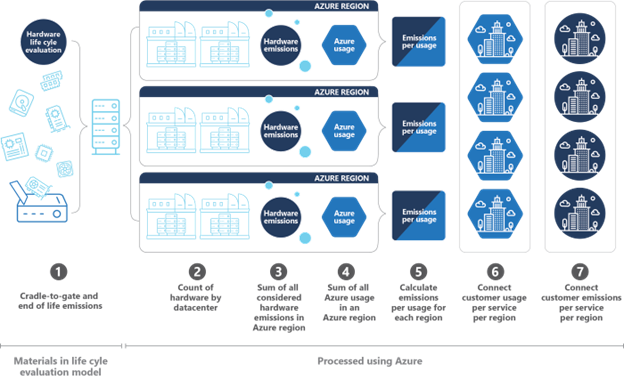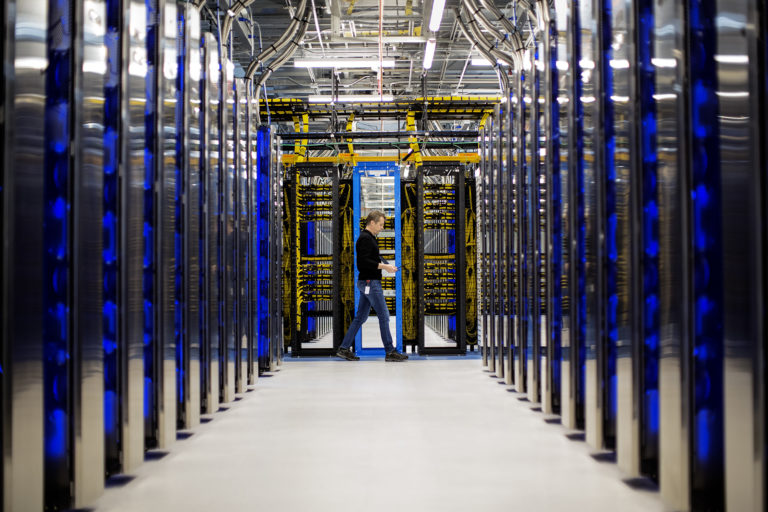Microsoft has won plaudits for making an API available that lets users of its Azure cloud services pull comprehensive data on their cloud emissions – including “Scope 3” indirect emissions from its value chain.
Emissions are “allocated for a specific customer based on their actual Azure usage” Microsoft said on January 9, 2023, adding that “the algorithm calculates a usage factor, which provides emissions per unit of customer usage in a specific Azure data center region. Emissions are then directly calculated based on this factor.”
The release comes as Amazon disappointed many CIOs and green IT practitioners intent on helping their organisations more accurately track their carbon emissions, after failing to deliver meaningful updates to its own distinctly limited emissions tracker at its annual re:Invent conference in Las Vegas in late 2022.
Follow The Stack on LinkedIn

AWS’s tool only shows emissions data by extremely high-level geographical groupings such as EMEA. It does not include Scope 3 emissions and is only updated monthly. It also takes a “market-based” approach to reporting so it shows zero for all regions covered by renewable energy purchases, although critics say that this is a carbon accounting trick and doesn’t reflect the carbon intensity of a given region’s electricity grid.
(Google Cloud, by contrast, takes a "location-based" approach that reflects ""gross emissions" arising from all electricity generation sources in use at a given location where its data centres are.)
A “Cloud and Net Zero” report jointly published by AWS and Atos shortly after re:Invent and based on a survey of 4,000 “decision makers” (53% C-Suite) somewhat ironically noted that “companies’ second biggest challenge – fragmented data, cited by 49% of respondents – is a concern. Without robust data and advanced analytics, firms won’t be able to accurately measure their carbon footprint or monitor their progress in reducing it.”
The Stack understands that at least one large financial services organisation is considering moving from AWS to Azure purely on the strength of the latter’s emissions reporting capabilities, which were already significantly more advanced than AWS’s even before the beta release of Azure’s “Cloud for Sustainability API” this month.
(As the biggest and most successful cloud provider AWS comes in for notable criticism for its inadequecies on carbon emissions reporting tools, but it would be only fair to note that IBM and Oracle have effectively failed to deliver any meaningful tool whatsoever to help customers track emissions from their cloud use.)
Azure emissions API: What does it do?

One of the most challenging areas when it comes to emissions calculations for any organisation is “Scope 3”.
The Azure emissions API’s calculation methodology for Scope 3 calculates the energy and carbon impacts for each data centre over time, including emissions data estimated from what it says are the following sources:
- The most common materials used to manufacture the IT infrastructure used in its data centres
- The most common parts that make up cloud infrastructure (hard disks, FPGA, steel racks)
- A complete inventory of all the assets in its data centers by region
- The carbon factors for cloud infrastructure across life stages (raw material extraction, component aggregation, usage, and end-of-life disposal)
The Azure emissions API or “Microsoft Cloud for Sustainability APIs” (methodology here) support EA Direct, MCA, and MPA accounts with direct billing relationships with Microsoft. Cloud Solution Provider (CSP) customers are not yet supported and will need to work directly with their CSP to learn about their cloud emissions.
The new tool comes days after the World Economic Forum (WEF)’s Global Risks Report 2023 stated that of the 10 greatest risks to the planet over the next decade, six were climate and environment-related with the top three being 1) failure to mitigate climate change; 2) failure of climate change adaption; 3) natural disasters and extreme weather events. Analysis from the International Energy Agency (IEA) in March 2022 meanwhile revealed that global energy-related carbon dioxide emissions rose 6% in 2021 their highest ever level, as the world economy rebounded from the Covid-19 crisis and relied heavily on coal to power growth.
The increase in global CO2 emissions of over two billion tonnes was the largest in history in absolute terms, more than offsetting the previous year’s pandemic-induced decline, the IEA analysis showed.
When it comes to AWS Scope 3 emissions meanwhile, some third-party providers have emerged with creative solutions to helping tackle the visibility gap, including the UK's Greenpixie which uses data from cost and usage reports (CUR) as a basis to estimate embodied emissions, despite a lack of visibility from AWS.
As the company tells The Stack: "The granularity of the CUR gives customers a granular ledger of usage data for billing purposes, which includes - instance type, region, service, usage type, and time of day, for a given billing item.Using their enrichment methodology, Greenpixie adds a number of emissions factors to each billing line item, enabling companies to identify areas of high cloud emissions, split into scopes. To go beyond Scope 1 & 2 for use of AWS instances, Greenpixie also includes AWS's Scope 3 as an emissions factor, which considers the proportion of the hardware’s total expected life cycle that companies are “renting” from Amazon. These calculations include both the duration of use and the proportion of the server's resources that were reserved during that time."
"To give a real example - if an AWS server has a lifespan of four years, and a company rents the server for a total of 100 days - the company will be responsible for 6.84% of the emissions associated with the server's entire lifecycle (their fraction of AWS's Scope 3 emissions of the hardware). Greenpixie’s work with usage data has shown carbon disclosures that do not include a cloud provider’s Scope 3 emissions, as in their solution, are underreporting by >90%. These constants are derived from a combination of open data and peer-reviewed studies such as the United States Data Center Energy Usage Report." (If you want to learn more about how cloud providers' computation emission datasets can be built check out our article on the work done by Teads Engineering.)









